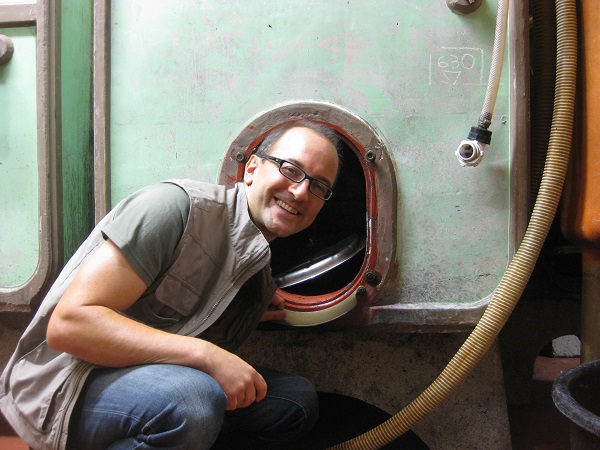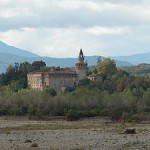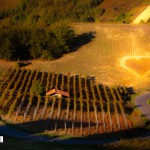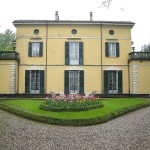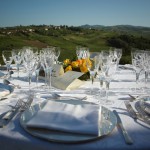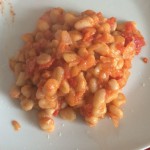Vittorio Barbieri talks about Podere Casale wines
When Nicolas Rigamonti asked me to write about Podere Casale wines, that is taste them and give my opinion, implicitly judge them, I felt vaguely ill at ease. Why? Nicolas and I met towards the end of the ’90 beginning of the ’00, in between the preparation of my university thesis and the beginning of my collaboration with Slow Food, when I started to enter the world of wine as a wine taster. Then as the years have passed, things have changed and since 2013, I no longer taste wines, I have started making wines. I have crossed to the other side of the barricade.
Thus difficult, as a producer (even more so as a producer ex-taster for wine Guides) to judge the wines, the choices, the work and the life of another wine producer.
I will, however, try, very simply, to talk about these four Podere Casale wines (the most significant of those produced by Nicolas and his collaborators) that I have tasted, actually ”drunk” at my table at home. That is why you will find them reviewed in the order they would be served at a meal, from the simplest to the more complex and ending with a sweet Passito.
ORTRUGO FRIZZANTE 2015
Replacing the empty glass on the table, a series of adjectives come to mind that evoke the pleasure of drinking this wine: gentle, fine, light. To the nose, floral delicate herbal notes are the first to emerge, along with apple making this an aperitif wine, or a good wine to accompany a snack, a drink without too many worries, best with fried fish or a zucchini omelette; in the background faint mineral sensations of stones and pebbles, to complete a simple picture but not that simple after all.
The taste is pleasant, and simple, but beyond the initial smooth vein, an acidic-sapid wave comes out that enlivens and defines, balancing the structure and making it essential.
GUTTURNIO FRIZZANTE 2015
Medium weight to the nose, a bit shady at first, it requires air to get the fruit and floral violet notes that are initially hidden. In the mouth, it flows linear, not too smooth, not too aggressive, right amount of alcohol, and the bubbles are not overbearing.
It cleans and refreshes the palate, an excellent companion of flavourful rich meals based on the local recipes of the Emilia cuisine, like piacentini anolini (whether filled with stracotto or with Grana or Parmigiano) served in a meat broth.
The back label suggests drinking at 19° C, I like to drink it fresh from the cellar or after 10 minutes in the refrigerator (15°C)
GUTTURNIO SUPERIORE 2013
In general, of the various types of Gutturnio that exist in the Province, Gutturnio Superiore is the one, in the best selections, that best expresses complexity and dynamism without the weight of wood or too much aging, and for this reason it is the type I tend to prefer, or at least the type that arouses my curiosity and stimulates me the most. Well then, how does Podere Casale behave?
Initially a mature fruity character to the nose, with notes of blackberry and prune, that leaves room for sensations of underbrush.. The mouth is smooth and enveloping, full, but when you fear it all ends in a placid, or worse, weak ending, the tannins of croatina and the acidity of barbera grasp the wine and bring it to a secure and compact finale .Serve at 17°C with roast duck cooked with prunes.
MALVASIA PASSITO 2012
Aromatic Malvasia di Candia is a great variety, the hidden treasure of Piacenza’s viticulture, to understand and interpret (thus not so easy to manage) but able to give great results to dry still wines and sweet Passito wines.
Of the various methods of drying the grapes, Podere Casale chooses late harvest, thus drying in the vineyard, for a wine that brings out the warmest and most Mediterranean side of the variety, as if in the sun of our hills, malvasia rediscovers its far off Greek origins .As if on the hills surrounding Piacenza, not far from the heart of padane fog, Piacenza reveals itself as a new Pantelleria.
Perfume of apricot, peach and plums, vanilla tones, slightly balsamic, floral hints of lavender and aromatic herbs. Dense, rich ,it almost touches opulence, but at the last moment it finds its harmony and balance in the finale.
To avoid overburdening the palate with too much sugar, I suggest this wine on its own or with aged cheese to be served at 14°-15° C.
Vittorio Barbieri, Born in Piacenza, 1973. Consultant and Wine Taster for Slow Food. Writes for FOOD Editori since 2012 and produces wines in the Colli Piacentini in the Azienda Biologica Cascinotta di Rizzolo since 2013.
.

